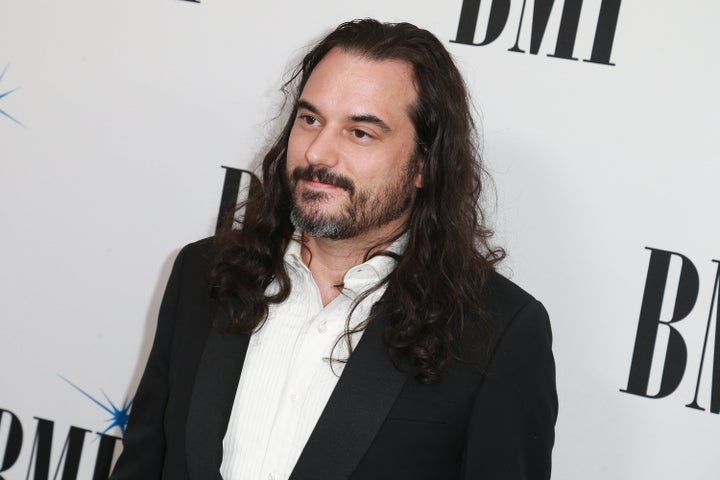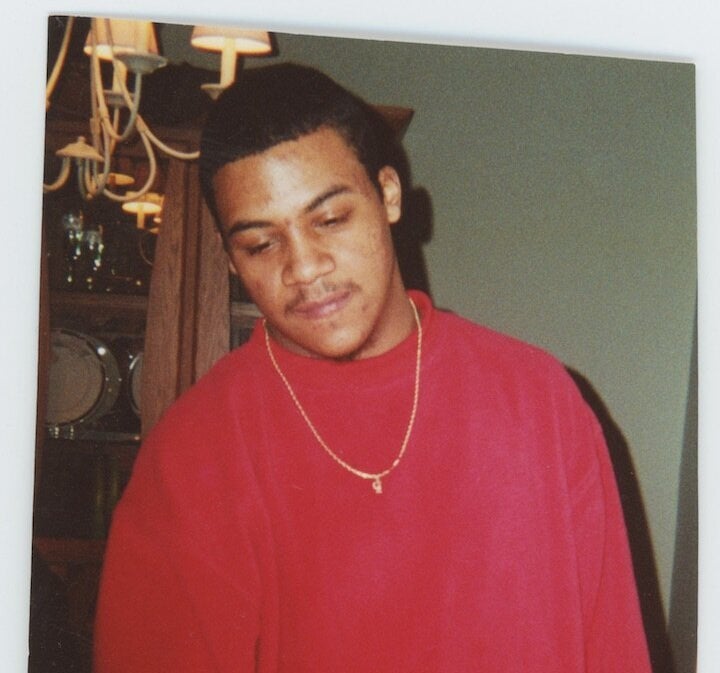A pitch bend. A drum beat. A haunting ostinato.
The original theme song of “Unsolved Mysteries,” composed by Gary Malkin and Michael Boyd in the 1980s, creeped out kids and adults for two decades. A feeling of fear would immediately manifest each and every time a new episode of the Robert Stack-hosted true crime and horror series would begin, alerting viewers to unbelievable events and spine-chilling twists.
Like many, composer West Dylan Thordson grew up devouring “Unsolved Mysteries” as a ’90s kid in the Midwest and was actually rewatching episodes when the production company 21 Laps Entertainment reached out to him about potentially scoring the reboot for Netflix, which debuted on July 1. As an audition of sorts, he had the opportunity to reimagine the iconic theme, something right in his wheelhouse as the composer of dread-tinged projects like “The Jinx: The Life and Deaths of Robert Durst,” “Foxcatcher” and M. Night Shyamalan’s latest outings “Split” and “Glass.”
“I wanted it to almost have this soft, menacing quality,” Thordson told HuffPost of his piano-led version. “So I slowed it down tempo-wise, and the creators and producers responded well to it.”
In this interview, Thordson walks us through his process of scoring the first six episodes of Netflix’s “Unsolved Mysteries” run and details how certain musical techniques always evoke a sense of looming terror.
Do you think your work on something like “The Jinx,” and then being a part of M. Night Shyamalan’s world, led you to book this gig?
Oh, absolutely. It’s kind of a full circle thing, where “Unsolved Mysteries,” as campy as a lot of people felt it was, when I was a child, I don’t remember it being that campy. I remember it was terrifying, so there’s this emotional connection to it. When I approached “The Jinx,” I definitely had “Unsolved Mysteries” in mind.
The very opening of “The Jinx” had this howl that was strongly influenced from that impression that I had of the original run ― this rat-in-the-headlight-type effect. And so it is this full circle feel of having this opportunity to go back to and reenvision an influence.
How did you go about reimagining the theme for a new generation? I noticed that you dropped the synthesizer and made it a little more piano-focused, but it’s equally as creepy.
I’m still using analog synth in doing the bending. The company Moog made a new, sort of vintage synthesizer and has really been making some great modern synths. I had just picked up this Moog Matriarch, which is a perfect throwback but moving forward-type synthesizer. And so that kind of bending howl was done with that and then we did want it to have that organic, gruff-y feel. I wanted this to be more seductive.

Have you talked to the original composers, Gary Malkin or Michael Boyd, about reinventing what they had created?
I haven’t. The opportunity hasn’t come up, but I’d love to talk to them. It’s like meeting people. I always want to do it, but in some ways I love just imagining how things are. I figure, at some point the opportunity will come up for me to discuss stuff with them. I read an article in the LA Times where they were interviewed and I found out a lot of like new information on how they approached creating the theme. Sounds like it kind of came together very spontaneously.
How do you go about evoking a feeling of fear in your instrumentation?
I framed it off with that piano arpeggio ― that sort of “Halloween”-esque vibe. And then I tried playing it very human-like, I guess, to make it feel more like a breath. The thing about that howling descent, it feels like a human breath, almost like an exasperation. With the current climate of everything, even previous to 2020, the world felt so congested, so I wanted to have this human breath [to represent that].
You mention the “Halloween” theme, which is a similar tonally to “The Exorcist.” Do you find that the ’70s-’80s era of movie music influenced you in your career at all?
Definitely. The first “Terminator,” that score, was a big influence of mine. It has this breathing machine-like quality to it and that was somewhat of the approach that I had taken with “The Jinx” ― was to have this “Terminator”-like subtext within the score. Then, the theme of “Unsolved Mysteries” does have that drive and sound from the ’80s that was very much about immediacy and it had a pace to it that was different than an “into the unknown”-type of ride.
What was the process of scoring each episode of “Unsolved Mysteries”? Did you see edits ahead of time?
Yes. There was very little modification from where I left in it. In my process, I came in and scored it when it was virtually completely edited and fully refined, so there wasn’t a lot of moving around. I tried something different with my approach on this, actually. I tried to do a pass of scoring it without watching the whole episode, so just writing the music linearly from start to end. And it was kind of a fast, effective approach. I was becoming surprised by the revelations that were happening and would then sometimes go back to enhance something.
Did you throw in musical cues for certain moments in the episodes where there’s a reveal or a twist?
Absolutely. And I tried to echo that theme throughout in little moments. I didn’t want to overuse it, but I wanted to have it to kind of come in at certain points, mostly within the spaces of mystery. I think that would be the difference between it and a lot of true crime is that it’s focused on mystery and the unknown versus the “gotcha” moment. It’s more about enticing the possibility of solving the crime.
So is every episode’s score a little different?
Definitely. Every single episode was very specific to that episode. I did like to reiterate certain emotional cues. I felt it was important that the series have some continuity, in the same way that it starts with a recognizable, iconic theme. That’s another thing ― to start it and end it with this iconic theme. And then because the stories are so personal by comparison to the previous run of “Unsolved Mysteries,” which was more fast and headline-oriented, [the new iteration] is about delving into the inner of the story. It’s about these people whose lives were shaken and left in an unknown place. So I wanted to approach the score with an invisibility and this yearning quality in all the episodes to find something. I really wanted to make the music less prominent to not knock people over the head with it. I wanted people to get this feeling of being drawn in.

Is there an episode you really enjoyed diving into?
From the first six, I really love the Alonzo [Brooks] episode [“No Ride Home”]. I don’t know what it was about it ― there’s just so much heart to it. I mean, it’s a really painful, painful episode, but there’s something about the weight of it that really pulled me in. And I also really liked the “Berskhires UFO” episode, as well.
The Alonzo Brooks episode has also led to a few new leads from viewers, which is what this show is all about: outsourcing tips. Is it exciting to see how people are reacting to the reboot, rallying behind these cases?
In some ways, I feel a little bit a need to back away from it. When it came out, I wasn’t sure if it would be quite as well received pop culturally, so it was great to see that it was. People from my home area have reached out to me within Minnesota, so it does have the same sort of reach as its original run on network television. But now with the nature of Netflix, it’s such a more personal experience because everyone is watching it at different times ,so there’s almost like this trickling in of the cultural impact. That’s interesting.
Yeah, and artistic choices, like not having a host à la Robert Stack, makes it feel like more than a straight reboot.
It would’ve been so impossible to do it in the right way with a narrator now just because of that presence that Robert Stack had. I know that there probably is someone who could have pulled it off, but it would be a monumental task. I think approaching it in a fresh way was the way [to go].
There are six more episodes to come in Part 2 of the first season. Have you seen those and can you give us any hints about what’s to come?
I have seen them. I approached them all at the same time. But I’ve been told to stay mum with all of this stuff. I wish I could say more. As far as I know, the plan is they’re coming up later this year.
Do you like hanging out in this true crime-horror genre? Or do you kind of want to open the box a little bit?
I would greatly prefer to open things up. I like finding different challenges. I’m most interested in assisting in storytelling and allowing the vision of the work to come forward.
Currently, I’ve been really fascinated with being able to be very mobile with my setup, so I’ve been converting a Sprinter van into my workstation on wheels. It’s a controlled environment and I feel really comfortable, so I’m kind of taking this time right now to dig in with that. Things are in a place where there’s definitely work for someone like me, but it’s in a bit of a strange lull and I don’t think that sort of lull happens too often within a career as a film composer. So I’m trying to make the best out of it. How can I make myself as accessible as possible? These are projects where being in-person, to me, feels very important to the process and being able to tell the best story as a collective, but I’m also trying to move forward into the future after the pandemic has passed.
It’s very clear that productions aren’t really happening and nobody knows when new content will finally be made and released. How has work been for you?
It’s strange. I live in Philadelphia right now and in a lot of ways I feel a little bit disconnected from where everyone is at. So much is kind of sitting back. I’m really curious to see what comes out of this, but I’m so looking forward to getting back to work. I just want to make sure I’m ready take it all on and I’m not lingering on this personal project of trying to fully work out the kinks in my Sprinter van.
“Unsolved Mysteries” is now streaming on Netflix.
